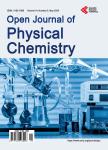Storage and Timed Release of Acetaminophen from Porous Carbonaceous Materials
Storage and Timed Release of Acetaminophen from Porous Carbonaceous Materials作者机构:Department of Chemistry University of Tennessee at Chattanooga Chattanooga USA
出 版 物:《Open Journal of Physical Chemistry》 (物理化学期刊(英文))
年 卷 期:2013年第3卷第2期
页 面:76-88页
学科分类:1002[医学-临床医学] 100214[医学-肿瘤学] 10[医学]
主 题:Carbon Powders Drug Release Adsorption of Acetaminophen Mesoporosity Storage of Acetaminophen
摘 要:Six carbon powders with varied surface areas and porosities were used to store and release acetaminophen (ACT). A 10 mg/mL solution of acetaminophen in phosphate buffer solution (pH = 7.0) at 25℃ with exposure to carbon powder for 72 hours was used to drive the maximum loading of acetaminophen into the powders. Carboxen 1012 (BET surface area of1500 m2/g) powder exhibited the greatest maximum adsorption of ACT (up to 62% by mass). The maximum ACT adsorption was correlated with surface area and porosity. The most effective carbon powders for binding ACT were ones containing high mesopore volumes. Loaded carbon powder was separated from the ACT solution and then phosphate buffer solution (pH = 7.0) was combined with the loaded carbon powder and ACT absorbance readings at 243 nm were taken over time. The various carbon powders were able to release a portion of the ACT that they originally adsorbed. The Carboxen 1012 powder displayed the greatest ACT release with a rapid initial release followed by a steady but slightly declining release over a time period of 2 to 11 weeks. The results were supportive of mesoporous carbons such as Carboxen 1012 being suitable for drug loading and release.



